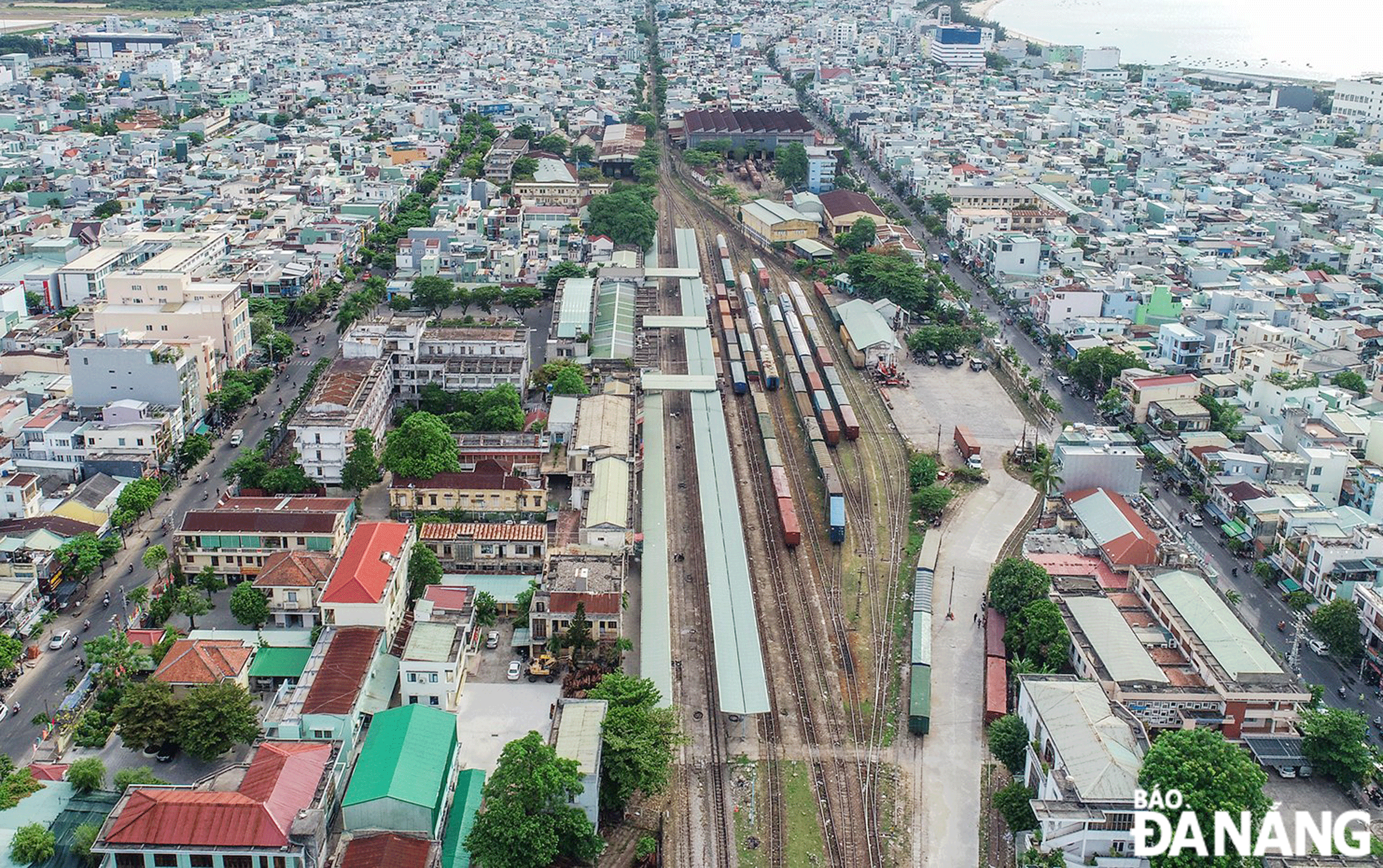Da Nang Railway Station project faces new opportunities
The Viet Nam Railway Authority has just put forward a proposal to renovate the railway line passing through the Hai Van Pass and relocate the Da Nang Railway Station out of the city centre, with a total estimated investment of up to VND19 trillion.
 |
| The existing Da Nang Railway station. Photo: THANH LAN |
The project promises to overcome current limitations, and create a driving force for the development of Da Nang's urban transport and infrastructure in the 2026-2031 period.
The purpose of the project is to remove bottlenecks in transport capacity on a section of railway line from Thua Thien Hue to Quang Nam provinces; build new tunnels,renovate the railway line and relocate the entire railwaystation out of the city centre; and handle transportation bottlenecks caused by the line passing through the Hai Van Pass.
According to the assessment, the railway line through the Hai Van Pass is facing many challenges. In particular, the mountain pass features many small radius curves and steep slopes, which limits train speed, and hinders freight and passenger transport activities. When entering the city centre, this railway line also causes traffic congestion and affects the urban beauty of Da Nang. Faced with such difficulties and limitations, the implementation of the project will bring positive economic and social effects.
The project, funded by medium-term public investment capital, is expected to be implemented over the 2026-2031 period. It will feature the construction of a new Hai Van tunnel and the relocation of the Da Nang Railway Station out of the city centre.
According to the Railway Network Planning for the 2021-2030 period, with a vision to 2050, the existing Da Nang Railway Station will be moved out of the city centre to the west of the current station, and the existing railway line running parallel to the east of the expressway will be renovated.
At the same time, the Kim Lien cargo terminal connected to the soon-to-be-developed Lien Chieu seaport will be built by 2030. This is part of the master plan to reduce the overload and technical limitations on the Vinh - Nha Trang railway route.
According to Mr. Vo Van Toan, Director of the Ky Viet Construction Technical Consulting Investment JSC, the project will not only solve traffic congestion on the railway line through Hai Van Pass but also open up many new investment opportunities in Da Nang. Additionally, it will contribute to improving urban aesthetics and creating favourable conditions for the development of new urban areas in the west of the city. It is not only an important step in enhancing the efficiency of railway transport but also a driving force for the sustainable development of Da Nang in the future.
Director of the municipal Department of Transport Bui Hong Trung said that Da Nang has already implemented the procedures for the initial steps of the relocation of the Railway Station.
Specifically, while waiting for approval from the Central Government, the municipal People's Committee has assigned the Department of Transport, and the Management Board of Priority Infrastructure Investment Projects, to select consulting units, research, and prepare and submit a proposal for the project to the People's Committee.
The city also requested relevant units to work with the People's Committee of Lien Chieu District to develop a plan for site clearance and resettlement; update the plan for arranging resettlement land in the Lien Chieu seaport subdivision planning; and complete the dossier of the Pre-Feasibility Study Report for the Da Nang railway station relocation project.
Heed will be on reviewing and coordinating with the Management Board of the project to develop subdivision plans for seaports, airports, bayside, riverside and east banks to update related contents, thereby ensuring consistency and synchronisation of the planning and serving as a basis for the implementation of the project.
Importance will be attached to completing the detailed plan at a scale of 1:500 in October 2024, and finalising the feasibility study report by October 2025.
Reporting by THANH LAN - Translating by M.DUNG, P.Tra